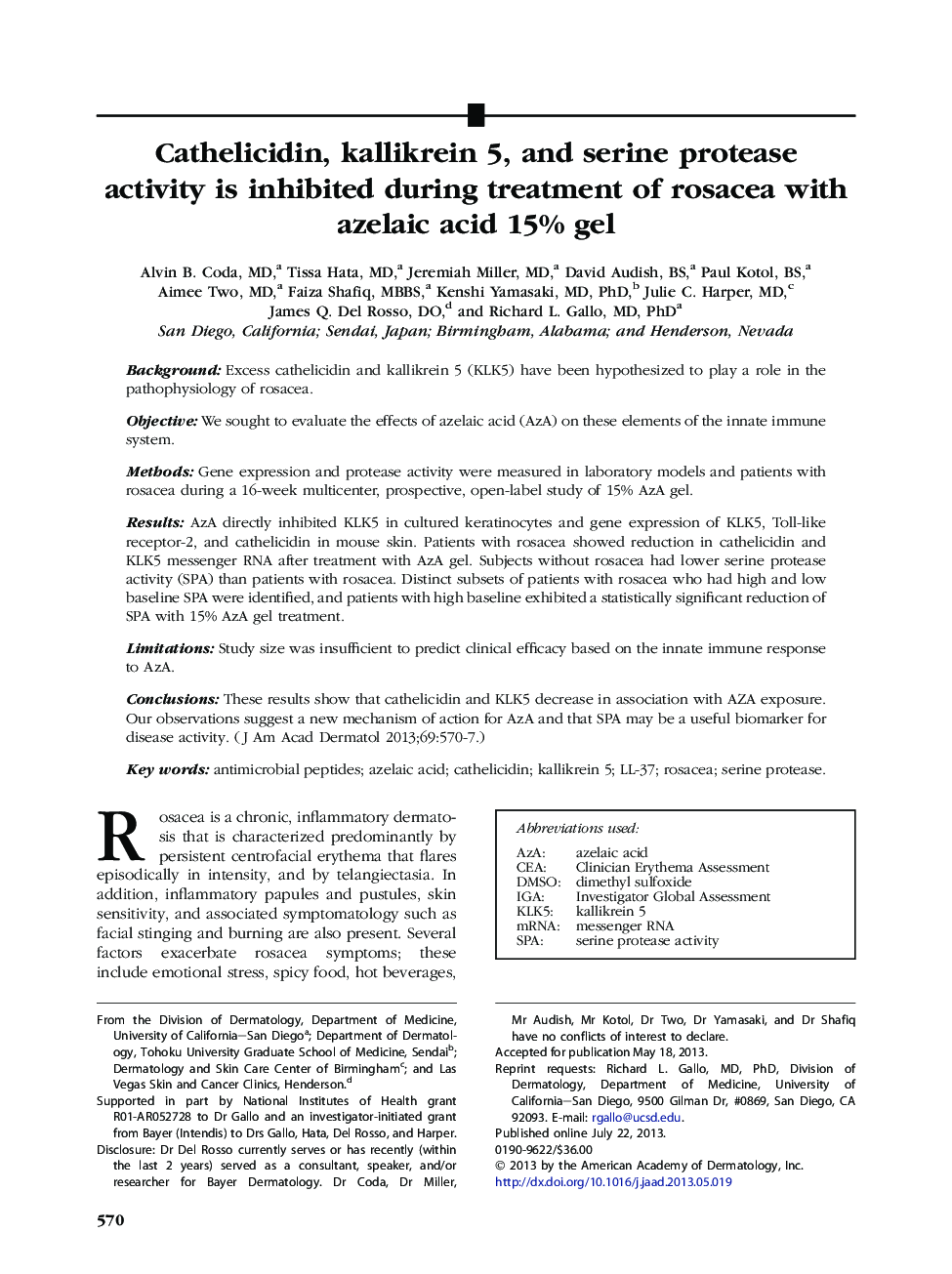| Article ID | Journal | Published Year | Pages | File Type |
|---|---|---|---|---|
| 3205231 | Journal of the American Academy of Dermatology | 2013 | 8 Pages |
BackgroundExcess cathelicidin and kallikrein 5 (KLK5) have been hypothesized to play a role in the pathophysiology of rosacea.ObjectiveWe sought to evaluate the effects of azelaic acid (AzA) on these elements of the innate immune system.MethodsGene expression and protease activity were measured in laboratory models and patients with rosacea during a 16-week multicenter, prospective, open-label study of 15% AzA gel.ResultsAzA directly inhibited KLK5 in cultured keratinocytes and gene expression of KLK5, Toll-like receptor-2, and cathelicidin in mouse skin. Patients with rosacea showed reduction in cathelicidin and KLK5 messenger RNA after treatment with AzA gel. Subjects without rosacea had lower serine protease activity (SPA) than patients with rosacea. Distinct subsets of patients with rosacea who had high and low baseline SPA were identified, and patients with high baseline exhibited a statistically significant reduction of SPA with 15% AzA gel treatment.LimitationsStudy size was insufficient to predict clinical efficacy based on the innate immune response to AzA.ConclusionsThese results show that cathelicidin and KLK5 decrease in association with AZA exposure. Our observations suggest a new mechanism of action for AzA and that SPA may be a useful biomarker for disease activity.
